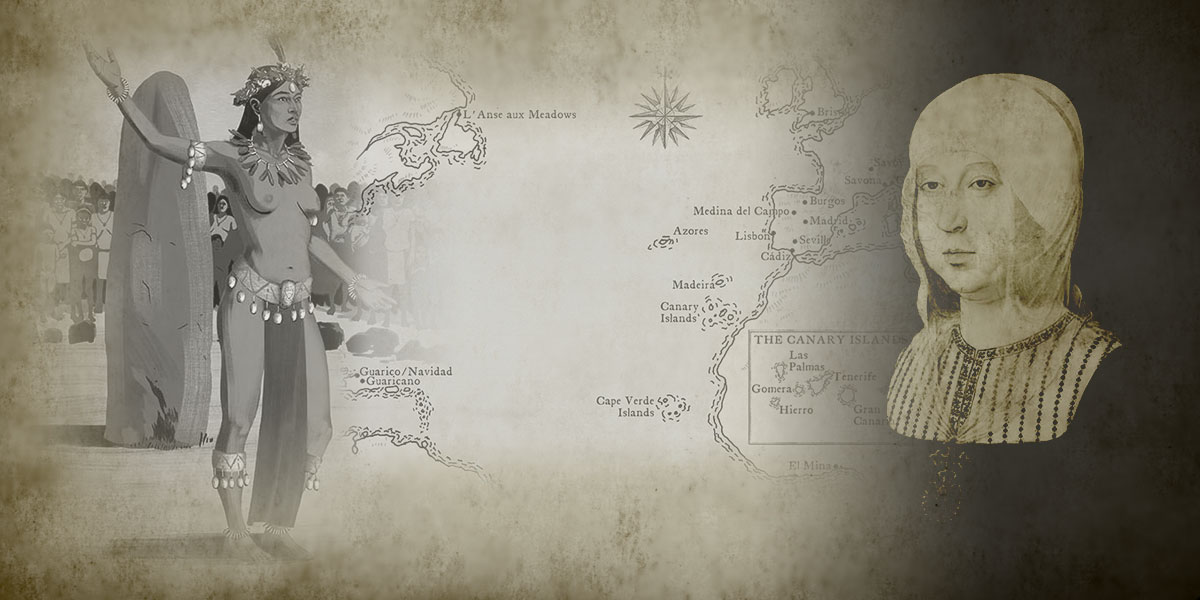
Andrew’s Current Blog
Archived blogs chronicling 1492 from a bicultural perspective appear under 1492 Blogs.
Andrew’s Current Blog
Archived blogs chronicling 1492 from a bicultural perspective appear under 1492 Blogs.
Dominican Republic Trip
Last November, I spent two weeks in the Dominican Republic researching events I’m dramatizing in Encounters Unforeseen’s sequel (1493-98), visiting sites of battles, forts, the first missionary efforts and resistance thereto, and—the subject of this blog—Santo...
Spain Trip
This fall, I traveled to Spain to research events from 1493 to 1498 that I’m depicting in the sequel to Encounters Unforeseen, including visiting sites where Queen Isabella and King Ferdinand made fateful decisions regarding “Española’s” subjugation or—as related in...
The Sea’s Origin and Deminán
Best wishes on Indigenous Peoples’ Day! I blog to recount a Taíno story of the sea’s origin—postscript to last year’s blog about mankind’s origin (October 8, 2018). The spirit Yaya had placed his son Yayael’s bones in a gourd to remember him. When Yayael’s mother...
Punishment at the Yaque
As recounted in prior blogs, Columbus’s march from La Isabela to establish Fort Santo Tomás in March 1494 violated Guarionex’s chiefdom and commenced “Española’s” conquest, whereby Columbus initially sought to intimidate the island’s peoples into submission and...
La Isabela, Six Months Later
A third of the men enlisted on Columbus’s second voyage grew seriously ill within days of La Isabela’s founding in January 1494 (see blog of January 6). As the expedition’s provisions exhausted, many men also hungered, reluctant to eat the food obtainable by bartering...
Lesser Antilles Trip
Last week, I traveled to sites in the Lesser Antilles where events occurred during Columbus’s second voyage that I’m depicting in the sequel to Encounters Unforeseen, which will dramatize the history of 1493–1498 through the eyes of the same Taíno and European...
Fort of Santo Tomás, March 17, 1494
On this date 525 years ago, Columbus commenced construction of his first fort in Española’s interior, built to protect a garrison of men as they explored for gold and commenced subjugation of the Taíno population. He named it for the apostle who initially doubted...
First Mass at La Isabela, January 6, 1494
On this date 525 years ago, Columbus and those who sailed on his second voyage (an estimated 1,200–1,500 persons) celebrated their first mass at the settlement he established on “Española’s” central northern coast (in the modern Dominican Republic) and named La...
Origin
Best wishes on Indigenous Peoples’ Day! I post to recount the Taínos’ belief about their origin. The fifteenth-century religion of many Taínos held that, in the beginning, mankind had lived in caves located at the center of the world in mountains in the island of the...
Updated Website!
Welcome to the updated website! I’m now researching Encounters Unforeseen’s sequel, which will chronicle the lives of the same Taíno and European protagonists from September 1493 to 1498, the period of the Taíno chieftains’ resistance to subjugation during and after Columbus’s second voyage. It’ll take me some years to write.
